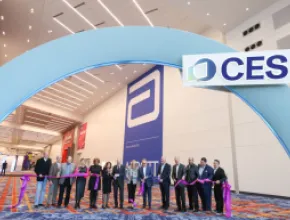Food and beverage is typically the most expensive line item on a meeting budget, and the growing list of attendee dietary needs is one of the driving factors impacting these costs.
At my company, thrive! meetings & events, we focus on helping clients feed engagement, nourish inclusion, and bolster the bottom line through food and beverage.
One of the ways our budget-saving strategies add value to meetings is achieved by initiating a safe, sustainable, and inclusive meeting menu management plan that incorporates attendee dietary needs into menus instead of an added cost.
Following are seven tips from thrive! meetings & events you can—and should—implement into your meeting menu planning to save money and foster inclusion, while also delivering a top-shelf sustainable event for all of your stakeholders.
1. Include F&B history in hotel and caterer RFPs:
Provide event F&B history, including special dietary requests made during registration and on-site, in all hotel and catering RFPs to notify potential partners of menu needs in advance.
Ask each vendor to disclose any special certifications they hold for accommodating dietary needs, front- and back-of-house food safety policies and procedures (especially important since the onset of COVID-19), as well as menus and pricing for any—“special”—meals they offer.
2. Outline responsibilities in vendor contracts and attendee registrations:
Outline responsibilities, service procedures, and pricing with all service providers, including planner(s), in contracts. This is vital to providing safe meals for attendees.
If inaccurate information is given or procedures skirted, it could result in a life-threatening situation and potential financial repercussions if an attendee decides to take legal action.
Also, issue a statement of responsibility to attendees. It shows that responsibility for attendee safety lies with vendors and lets attendees know that an allergen-free environment cannot be guaranteed.
3. Be specific when asking event participants for their dietary needs:
Use individual checkboxes for specific needs—vegan, vegetarian, halal, kosher, gluten-free, diabetic, food allergens—to lessen assumptions.
Provide additional checkboxes to ask which food allergies an attendee might have and ask if they carry epinephrine and to complete a food allergy action plan in case of an emergency.
For those who request kosher or halal meals, ask if they require certified prepared meals or only need to restrict themselves to eating “traditional style” foods, or if a vegan or vegetarian option would satisfy them.
4. Incorporate dietary needs into the overall menu design:
To reduce costs, save time, and curtail food waste, work with chefs to incorporate as many needs as possible into the overall menu without compromising taste or presentation.
This will help reduce the number of special meals and risk of cross-contamination, and it will help attendees feel included. Earlier this year, I helped a client reduce 200 requests (one-third of their attendees) to only 35 personalized plates by doing this.
[Related: Top Chefs]
5. Provide meal cards for attendees and labels for boxed meals, buffets, and menus:
Provide personalized meal cards to each attendee for the meals they are attending.
Duplicate tickets should be given to caterers to tag meals in the back of the house and to educate staff on how meals will be requested.
If boxed lunches or buffets (limited now because of COVID-19) are being used, each box and buffet menu item should be named and tagged if it contains or is free of any of the top eight to 14 allergens, as well as if it meets any preferences (vegan, vegetarian, gluten-free).
The catering staff serving meals should also be fully aware of what is and isn’t in the food they are presenting. Menus should be tagged with allergens and other needs and uploaded to event apps for attendees to reference when sitting down to eat.
6. Verify all special meals and serving procedures in BEOs and at pre-cons:
All menu items, including personalized plates (vegan, gluten-free) should be listed on banquet event orders and tagged, just like above, if it contains or is free of any of the top eight to 14 allergens, as well as if it meets any preferences.
Serving procedures should be outlined as well. All meals and procedures should be confirmed again at pre-con and daily F&B meetings, if held.
Again, considering COVID-19, all serving procedures and meals should also be communicated and confirmed with attendees via event websites, apps, and emails.
[Related: 5 Ways to Use Food to Inspire Change at Your Next Event]
7. Follow up with attendees and caterers to ensure accuracy:
The final step in safeguarding attendees and providing outstanding customer service is to confirm attendees received a meal that was safe and satisfying for them. After each food function, ask the vendor how many special meals were served and if others were requested during service.
Read next: Food & Beverage at Events: Needs Versus Wants





